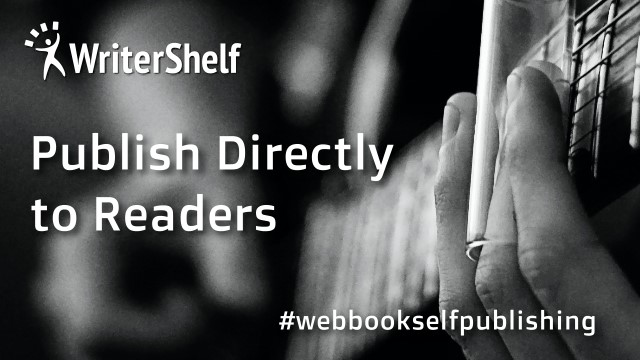The Future of Government and Public Sector IT Solutions: Ensuring Robust Government Cloud Security
7
0
·
2025/10/17
·
6 mins read
☕
WriterShelf™ is a unique multiple pen name blogging and forum platform. Protect relationships and your privacy. Take your writing in new directions. ** Join WriterShelf**
WriterShelf™ is an open writing platform. The views, information and opinions in this article are those of the author.
Article info
Categories:
⟩
⟩
Tags:
Total: 1314 words
Like
or Dislike
More to explore









In an era marked by digital transformation, government agencies and public sector organizations are increasingly adopting advanced IT solutions to streamline operations, enhance public service delivery, and meet the evolving needs of citizens. As these organizations embrace the digital revolution, ensuring the security of sensitive data and maintaining robust systems becomes paramount. Government and public sector IT solutions are not only about efficiency and innovation; they must also be built on a foundation of trust, transparency, and, most importantly, security.
One of the most critical aspects of these IT solutions is government cloud security. As more public institutions move their operations to the cloud, protecting data from cyber threats and ensuring compliance with stringent regulations are essential to maintaining public trust and service continuity. This blog post explores the unique challenges and solutions for IT in the public sector, with a particular focus on cloud security in government operations.
The Shift Toward Digital Transformation in Government and Public Sector
In recent years, there has been a seismic shift in how the government and public sector approach technology. Legacy systems, once the backbone of public services, are becoming outdated and inefficient. This has led to a growing push for digital transformation, which includes adopting cloud solutions, advanced analytics, artificial intelligence (AI), and automation to better serve citizens and optimize internal operations.
The move to digital has led to significant improvements in how government departments interact with citizens, streamline workflows, and enhance service delivery. For instance, digitizing processes like tax filing, benefit distribution, and public health services has not only improved efficiency but also made services more accessible to the public. By leveraging advanced IT solutions, governments can harness real-time data to make better-informed decisions, improve transparency, and promote accountability.
However, with the rapid pace of this transformation, one critical concern remains: security.
The Challenge of Government Cloud Security
With the increasing dependence on cloud solutions, government and public sector organizations face unique security challenges. Cloud computing, by its nature, involves the storage and processing of vast amounts of sensitive information, ranging from personal data to national security intelligence. These organizations need to safeguard against cyberattacks, data breaches, and system failures, all of which could have far-reaching consequences for citizens and the nation’s infrastructure.
1. Data Privacy and Confidentiality
Governments deal with highly sensitive data, from health records and tax information to criminal justice data. The confidentiality of this data is paramount. When using cloud services, governments need to ensure that third-party cloud providers comply with strict data protection regulations, such as the General Data Protection Regulation (GDPR) in the EU or similar legislation in other countries.
Cloud security in the public sector requires strong encryption protocols, both for data in transit and at rest. Data sovereignty also comes into play, meaning that governments need to ensure their data remains within specific geographic boundaries or complies with legal requirements for cross-border data transfers.
2. Cybersecurity Threats
Governments are prime targets for cybercriminals and state-sponsored attackers. Cyberattacks against government systems can range from phishing attacks targeting officials to ransomware attacks crippling public infrastructure. The stakes are incredibly high. A breach of a government database can not only expose the personal information of citizens but also jeopardize national security.
Government cloud security solutions must incorporate advanced cybersecurity measures, including intrusion detection systems, firewalls, and AI-powered threat detection to monitor and defend against emerging cyber threats. The use of multi-factor authentication (MFA) and biometric verification also helps to strengthen access controls and prevent unauthorized access.
3. Compliance with Regulations and Standards
Governments must comply with a vast array of regulations, many of which are designed to protect citizen data and ensure transparency in government operations. In the U.S., for example, the Federal Risk and Authorization Management Program (FedRAMP) sets stringent security standards for cloud services used by federal agencies. Similar frameworks exist in other countries to ensure cloud solutions meet national and international security and privacy standards.
As part of the digital transformation process, governments must ensure that their cloud providers adhere to these standards. This can be a complex task, especially when dealing with multiple vendors and cloud environments. This is where partnerships with trusted and certified cloud providers become essential.
Key Strategies for Ensuring Robust Government Cloud Security
Government and public sector organizations must take a proactive approach to cloud security. Here are some key strategies to ensure that government cloud security remains robust:
1. Cloud Security Posture Management (CSPM)
Cloud Security Posture Management (CSPM) tools help organizations maintain a secure cloud environment by continuously monitoring their cloud infrastructure for security vulnerabilities. By identifying misconfigurations, weak access controls, or compliance violations in real-time, CSPM tools enable governments to respond quickly to potential security threats. These tools play a crucial role in preventing costly breaches and ensuring ongoing compliance with industry regulations.
2. Zero Trust Security Model
The Zero Trust security model is a paradigm shift in how security is approached within organizations. Under this model, no one, whether inside or outside the organization, can be trusted by default. Every request for access to government systems is rigorously authenticated, and access is granted only on a need-to-know basis. This approach minimizes the risk of unauthorized access and helps protect sensitive government data, even if an attacker manages to bypass initial defenses.
3. Encryption and Data Tokenization
Strong encryption is the backbone of any government cloud security strategy. Encrypting data both at rest and in transit ensures that even if an attacker gains access to the system, the data remains unreadable without the appropriate decryption key. Tokenization, a process in which sensitive data is replaced with a non-sensitive equivalent, is another effective way to protect data in cloud environments.
4. Regular Audits and Continuous Monitoring
Ongoing monitoring and regular audits are essential to maintaining a secure cloud environment. By continuously tracking access logs, identifying anomalies, and ensuring that security protocols are being followed, governments can detect potential threats before they escalate into major security incidents. Conducting regular security audits ensures that the cloud environment remains compliant with internal policies and regulatory standards.
5. Collaboration with Trusted Cloud Providers
When it comes to cloud security, collaboration with reputable cloud service providers is essential. Governments must select cloud providers that offer high levels of security and compliance with regulations. Major players like Amazon Web Services (AWS), Microsoft Azure, and Google Cloud have dedicated government-specific services, providing secure cloud environments tailored to meet public sector needs.
The Road Ahead: Ensuring Trust and Accountability
As governments continue to invest in IT solutions that improve efficiency, transparency, and service delivery, the importance of cloud security cannot be overstated. A secure cloud infrastructure ensures the continuity of services, protects sensitive data, and fosters public trust in government operations.
The integration of robust government cloud security protocols will be key to navigating the challenges of digital transformation in the public sector. By focusing on data privacy, cybersecurity threats, regulatory compliance, and strong security measures, governments can successfully harness the power of IT solutions without compromising security.
Ultimately, the future of government IT solutions lies in adopting a holistic, multi-layered security strategy that adapts to the evolving threat landscape. As technology continues to advance, so too must our approach to government cloud security, ensuring that the public sector remains a trusted steward of the data it holds, now and in the future.
Conclusion
The digital transformation of government and public sector IT solutions is an exciting prospect, offering vast potential for improved services, efficiency, and citizen engagement. However, with this transformation comes the pressing responsibility of securing sensitive data and safeguarding against ever-evolving cyber threats. Government cloud security is at the heart of this challenge, and robust strategies are essential for success. By embracing advanced security protocols, leveraging trusted cloud providers, and maintaining a vigilant focus on compliance and risk management, governments can build the secure and efficient IT infrastructure needed to thrive in the digital age.